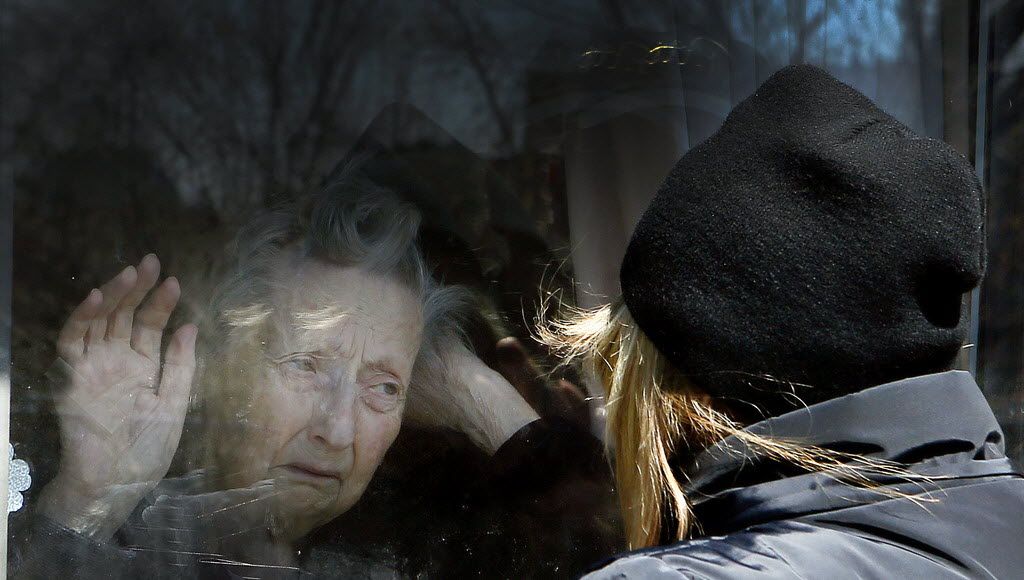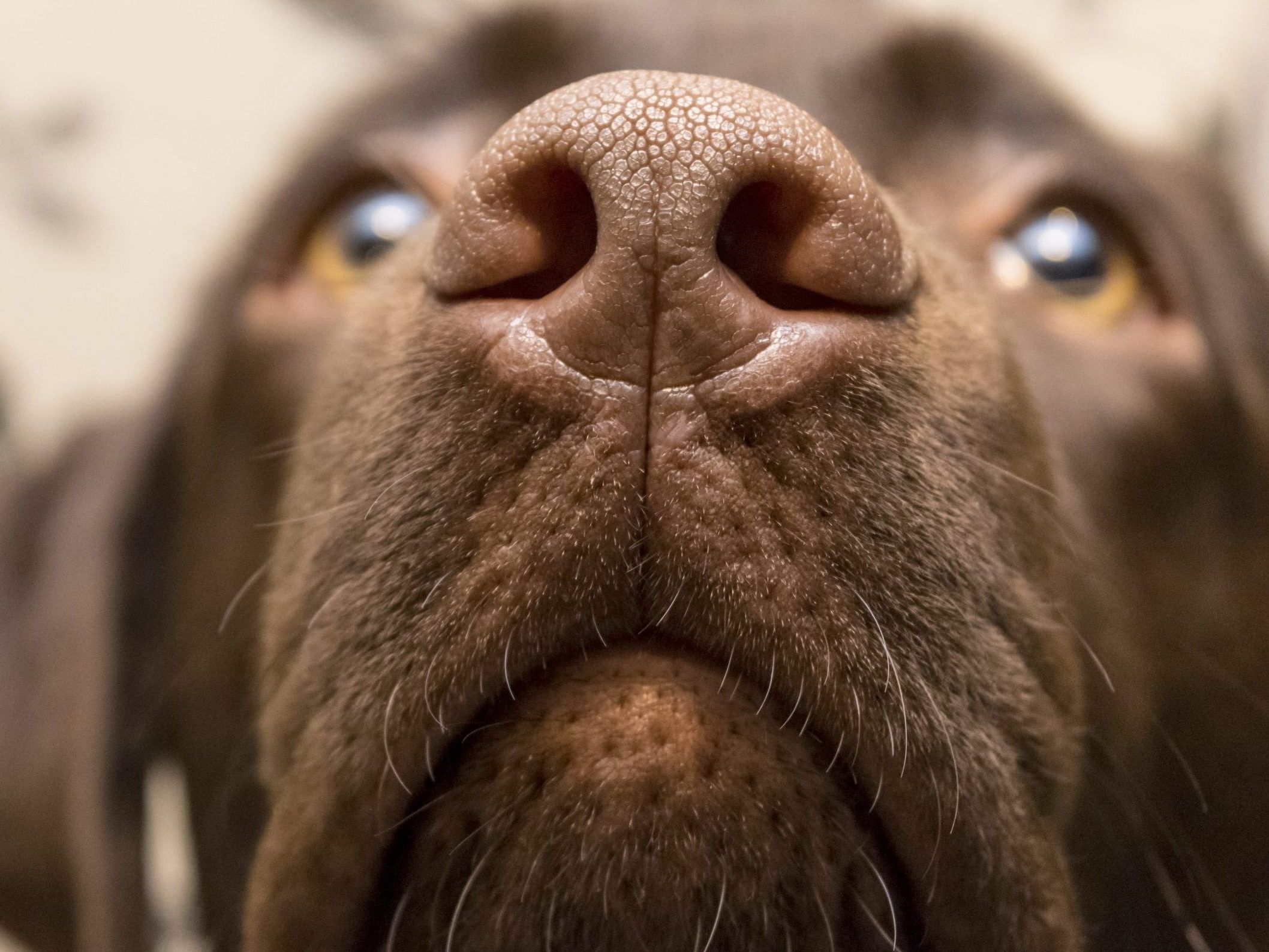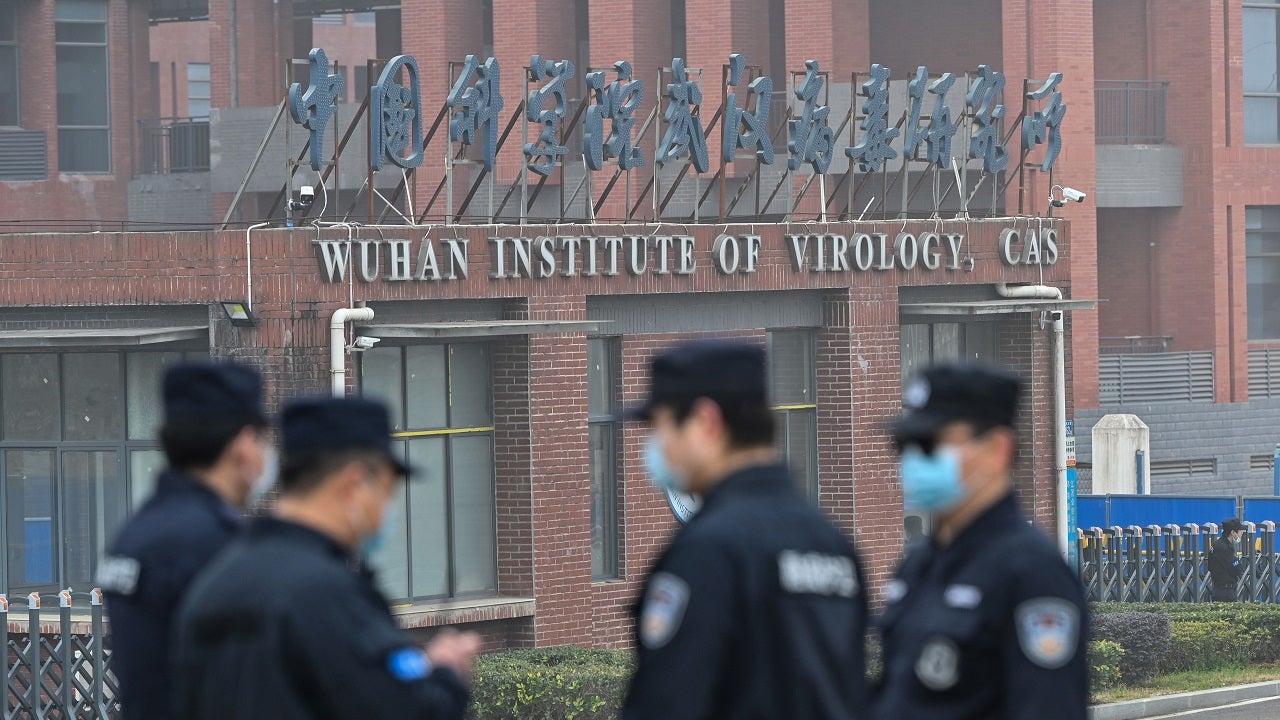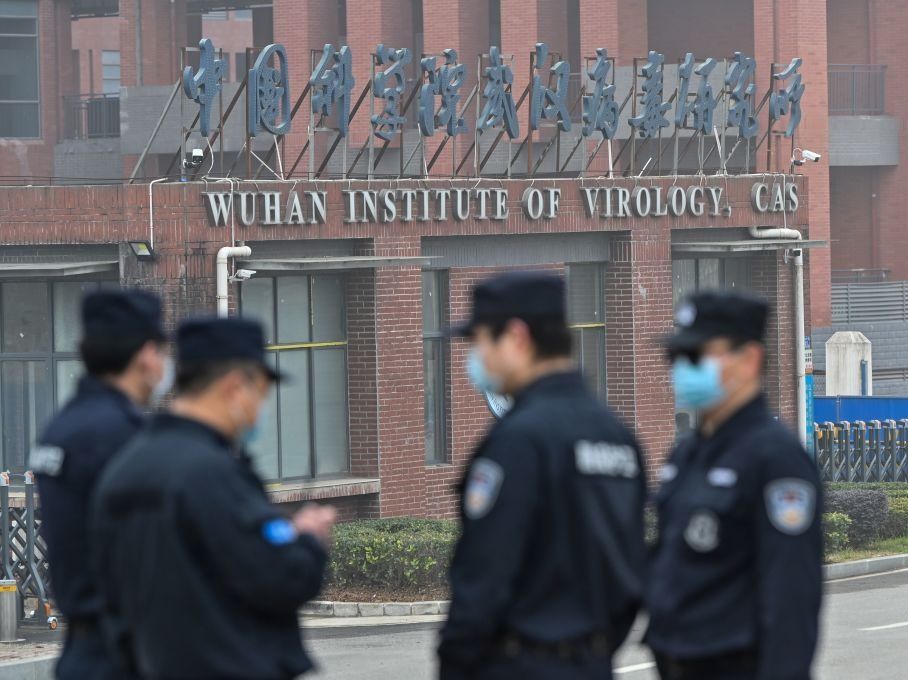Why not it is only taxpayers money , there is always more where that came from .Feds say chasing down CERB cheats would be 'undue burden'
Author of the article:Kevin Connor
Published Aug 22, 2023 • Last updated 1 day ago • 1 minute read
Recovering $2 billion from job-quitting CERB cheats would be an “undue burden” for investigators, says a federal memo.
CERB cheques.
Recovering $2 billion from job-quitting cheats who stole from the Canada Emergency Response Benefit program would be an “undue burden” for investigators, says a federal memo.
More than 190,000 claimants quit work to take a “CERB vacation,” according to Blacklock’s Reporter.
“Due to the subjective nature of the criteria, the difficulty of proving eligibility after the fact and undue burden that investigation would create, Service Canada will apply a risk managed approach to these cases,” the Department of Employment wrote in a February 7 briefing memo.
Figures show 190,254 people quit their jobs to claim $2,000 monthly pandemic relief cheques.
Payments to quitters totalled $1.6 billion, said the briefing note.
The Canada Emergency Response Benefit Act was passed in 2020 to save jobless taxpayers from eviction.
“We have had numerous reports from clients and friends where former employees prefer to be on a CERB vacation rather than returning to work,” Kim Moody, CEO of Moodys Tax Law LLP of Calgary, testified at 2020 hearings of the Commons human resources committee. “We are seeing and experiencing this, especially with part-time employees.”
The Department of Employment said it tightened criteria and promised to recover undeserved payments.
“There will be the possibility for the government after the fact, if there is some suspicion an application has been made mistakenly or with intent to defraud the government, we can go back and ask the individual to explain how they were eligible,” Elisha Ram, associate assistant deputy minister, testified at 2020 committee hearings.
Parliament budgeted $24 billion for the program.
Final costs totalled $81.6 billion and auditors haven’t fully accounted for the discrepancy.
According to the memo, $6.1 million was paid in benefits to 1,522 prisoners, $3.3 million to 704 claimants who did not live in Canada, and $2.2 million to a total 434 children under age 15.
All were ineligible to receive the payments.

Feds say chasing down CERB cheats would be 'undue burden'
Recovering $2 billion from job-quitting CERB cheats would be an “undue burden” for investigators, says a federal memo.torontosun.com
COVID-19 'Pandemic'
- Thread starter Ocean Breeze
- Start date
You are using an out of date browser. It may not display this or other websites correctly.
You should upgrade or use an alternative browser.
You should upgrade or use an alternative browser.
The certainly have no problem chasing down law abiding taxpayers that make a mistake on tax filings.Why not it is only taxpayers money , there is always more where that came from .
They know you don’t vote Liberal .The certainly have no problem chasing down law abiding taxpayers that make a mistake on tax filings.
This latest COVID variant could be the best yet at evading immunity
Author of the article:Washington Post
Washington Post
Fenit Nirappil, The Washington Post
Published Aug 25, 2023 • Last updated 1 day ago • 6 minute read
A highly mutated form of the coronavirus that threatens to be the most adept yet at slipping past the body’s immune defenses is capturing the attention of virologists and health officials.
While only about a dozen cases of the new BA.2.86 variant have been reported worldwide – including three in the United States – experts say this variant requires intense monitoring and vigilance that many of its predecessors did not. That’s because it has even greater potential to escape the antibodies that protect people from getting sick, even if you’ve recently been infected or vaccinated.
The latest variant does not appear to make people sicker than earlier iterations of the virus; antiviral treatments should still work against it and tests should still detect it, according to a risk assessment published Wednesday by the Centers for Disease Control and Prevention. It’s too soon to know whether the updated booster formula expected to come out next month that targets a different subvariant would be effective against this highly mutated one.
If this feels like déjà vu, it should.
After igniting a global explosion of cases in the winter of 2021-2022, the highly contagious omicron variant spawned a slew of immune-evading descendants. Most fade into irrelevance. Others, such as the XBB lineage accounting for most U.S. cases this year, outcompete the rest with their transmissibility and ability to infect – and reinfect. Nearly every announcement of a new variant came with reassurance from public health officials that it did not cause more severe illness.
But BA.2.86 stands out in the omicron family tree because of how much it has morphed. It has more than 30 mutations on its spike protein, the part of the virus that pierces through the cell and that vaccines train the body to fend off. Experts believe the antibodies forged through battles with earlier variants will have a difficult time recognizing this new foe.
“This is a radical change of the virus like what happened with omicron, which caught a lot of people defenseless,” said Eric Topol, director of the Scripps Research Translational Institute. “Even if they had a vaccine or prior infection, it could still get into them and infect them again or for the first time. We are facing that again.”
The biggest unknown is whether the BA.2.86 will be transmissible enough to cause a surge. A variant adept at evading immunity would not take off in a population if it does not spread efficiently and multiply.
“It is still a possibility we either see this variant spread very widely as happened with the original omicron,” said Jesse Bloom, a computational biologist who monitors coronavirus variants at the Fred Hutchinson Cancer Research Center in Seattle, “or it doesn’t end up spreading very widely and we continue to have these XBB variants.”
Experts have paid close attention to Bloom’s analysis of BA.2.86, which stressed that the evolutionary jump is on par with the one that gave rise to omicron.
Officials say they should have a clearer understanding of the variant’s transmissibility in the coming weeks as surveillance ramps up in response to the threat.
On Aug. 12, virologists in Israel were the first to announce that BA.2.86 had been detected in a patient. Scientists in Denmark, Britain, South Africa, Switzerland and Thailand soon followed. Some of the samples were collected in late July. The sporadic reports add up to evidence of international transmission, but the magnitude is unclear.
In one Swiss town, roughly 2 percent of coronavirus particles sequenced in a wastewater sample taken in early August were BA.2.86 variants. That was the first sign of a variant spreading within a community.
“Finding BA.2.86 in yet an additional country – now in wastewater rather than a patient – is another piece of evidence that BA.2.86 is globally widespread by now,” Tanja Stadler, a professor at the Swiss Federal Institute of Technology who announced the findings, wrote in an email. “It is still too early to tell if this variant will cause a major wave.”
The United States is experiencing an uptick of cases believed to be driven primarily by XBB and the new EG.5 variant, but several BA.2.86 cases have been announced in the past week. One of the BA.2.86 cases was discovered in Michigan in an older adult with less severe symptoms, while another was detected in a traveler arriving at Dulles International Airport in Virginia. A third case was detected in an Ohio wastewater sample.
Areas where BA.2.86 have been detected have not seen disproportionate increases in hospitalizations, the CDC said, suggesting it’s not more likely to cause more severe illness than other omicron subvariants.
Even if variants are adept at escaping antibodies to enter cells, those antibodies are just the front lines of the immune system, which has other mechanisms to fight off the virus and keep the infection less severe. It’s like a teenager who can sneak past a bouncer to get into a club but gets thrown out by security before causing trouble. When omicron struck, a huge swath of the country lacked immunity because they never had covid or had not been vaccinated – but that’s no longer the case.
“Nearly all the U.S. population has antibodies to SARS-CoV-2 from vaccination, previous infection, or both, and it is probable that these antibodies will continue to provide some protection against severe disease from this variant,” the CDC said in its risk assessment of BA.2.86 this week. “This is an area of ongoing scientific investigation.”
BA.2.86 poses a public health messaging challenge. For a year and a half, headlines announced new omicron subvariants with alphanumeric names that resemble preset WiFi passwords, accompanied by similar descriptions of immune evasion without causing severe illness. Officials worry about a covid-fatigued public tuning out news of a variant that could pose a serious threat. It’s only been a few weeks since EG.5 captivated public attention, even though it’s not all that different from its XBB cousin.
The rise of BA.2.86 has raised concerns about declining visibility into the evolution of the virus. Genetic sequencing is necessary to track variants but these efforts have been pared back globally. GISAID, a global data sharing initiative for the coronavirus, has seen specimens collected for genetic sequencing plunge from 425,000 in August 2022 to 38,000 last month.
In the United States, the CDC no longer offers variant estimates for most regions of the country because of declines in surveillance.
Variant watchers say they’re worried the world may be blind to the true reach of BA.2.86 as a result.
“The situation served as a significant wake-up call,” said Rajendram Rajnarayanan, a computational biologist who monitors genetic sequencing data as part of an international consortium of virus watchers, in an email. “This is especially true as global testing and sequencing infrastructure started disappearing (or is in the process of getting dismantled) following the end of pandemic declarations earlier this year.”
The new coronavirus booster expected to become available in late September is designed to target the XBB.1.5 variant, which is largely similar to the other variants in circulation. Testing is underway to determine whether the booster will be effective against BA.2.86. But because BA.2.86 is so significantly mutated, some virologists are concerned that it can easily bypass the protection from infection the new booster would provide.
In a Thursday media briefing about vaccines, a Food and Drug Administration official told reporters the agency feels comfortable saying the updated booster would at least protect people from severe outcomes from BA.2.86 infections. But the Biden administration would not let that official express such confidence on the record.
Results from tests designed to demonstrate the boosters’ effectiveness against BA.2.86 are not expected until after Labor Day.
Regardless of whether BA.2.86 becomes a threat, Topol, the director of the Scripps Research Translational Institute, said the potential mismatch underscores the folly of attempting to annually update vaccines for an ever-evolving virus. He said government officials should steer resources toward developing vaccines that are essentially variant-proof with the ability to target a broad range of coronaviruses.
For now, experts say the rise of BA.2.86 is more of a subject for scientific scrutiny than public panic.
“My level of concern changes every hour,” said Katelyn Jetelina, an epidemiologist who writes a newsletter about covid-19 developments. “It’s hard. It’s like seeing a storm form out in the distance. We don’t know if it’s going to fizzle away or become a Category 5 or somewhere in between.”
![GettyImages-1268214384-scaled-e1692979804238[1].jpg GettyImages-1268214384-scaled-e1692979804238[1].jpg](https://forums.canadiancontent.net/data/attachments/17/17359-17097dee1bae07b83ed499be203ec51f.jpg)

 torontosun.com
torontosun.com
Author of the article:Washington Post
Washington Post
Fenit Nirappil, The Washington Post
Published Aug 25, 2023 • Last updated 1 day ago • 6 minute read
A highly mutated form of the coronavirus that threatens to be the most adept yet at slipping past the body’s immune defenses is capturing the attention of virologists and health officials.
While only about a dozen cases of the new BA.2.86 variant have been reported worldwide – including three in the United States – experts say this variant requires intense monitoring and vigilance that many of its predecessors did not. That’s because it has even greater potential to escape the antibodies that protect people from getting sick, even if you’ve recently been infected or vaccinated.
The latest variant does not appear to make people sicker than earlier iterations of the virus; antiviral treatments should still work against it and tests should still detect it, according to a risk assessment published Wednesday by the Centers for Disease Control and Prevention. It’s too soon to know whether the updated booster formula expected to come out next month that targets a different subvariant would be effective against this highly mutated one.
If this feels like déjà vu, it should.
After igniting a global explosion of cases in the winter of 2021-2022, the highly contagious omicron variant spawned a slew of immune-evading descendants. Most fade into irrelevance. Others, such as the XBB lineage accounting for most U.S. cases this year, outcompete the rest with their transmissibility and ability to infect – and reinfect. Nearly every announcement of a new variant came with reassurance from public health officials that it did not cause more severe illness.
But BA.2.86 stands out in the omicron family tree because of how much it has morphed. It has more than 30 mutations on its spike protein, the part of the virus that pierces through the cell and that vaccines train the body to fend off. Experts believe the antibodies forged through battles with earlier variants will have a difficult time recognizing this new foe.
“This is a radical change of the virus like what happened with omicron, which caught a lot of people defenseless,” said Eric Topol, director of the Scripps Research Translational Institute. “Even if they had a vaccine or prior infection, it could still get into them and infect them again or for the first time. We are facing that again.”
The biggest unknown is whether the BA.2.86 will be transmissible enough to cause a surge. A variant adept at evading immunity would not take off in a population if it does not spread efficiently and multiply.
“It is still a possibility we either see this variant spread very widely as happened with the original omicron,” said Jesse Bloom, a computational biologist who monitors coronavirus variants at the Fred Hutchinson Cancer Research Center in Seattle, “or it doesn’t end up spreading very widely and we continue to have these XBB variants.”
Experts have paid close attention to Bloom’s analysis of BA.2.86, which stressed that the evolutionary jump is on par with the one that gave rise to omicron.
Officials say they should have a clearer understanding of the variant’s transmissibility in the coming weeks as surveillance ramps up in response to the threat.
On Aug. 12, virologists in Israel were the first to announce that BA.2.86 had been detected in a patient. Scientists in Denmark, Britain, South Africa, Switzerland and Thailand soon followed. Some of the samples were collected in late July. The sporadic reports add up to evidence of international transmission, but the magnitude is unclear.
In one Swiss town, roughly 2 percent of coronavirus particles sequenced in a wastewater sample taken in early August were BA.2.86 variants. That was the first sign of a variant spreading within a community.
“Finding BA.2.86 in yet an additional country – now in wastewater rather than a patient – is another piece of evidence that BA.2.86 is globally widespread by now,” Tanja Stadler, a professor at the Swiss Federal Institute of Technology who announced the findings, wrote in an email. “It is still too early to tell if this variant will cause a major wave.”
The United States is experiencing an uptick of cases believed to be driven primarily by XBB and the new EG.5 variant, but several BA.2.86 cases have been announced in the past week. One of the BA.2.86 cases was discovered in Michigan in an older adult with less severe symptoms, while another was detected in a traveler arriving at Dulles International Airport in Virginia. A third case was detected in an Ohio wastewater sample.
Areas where BA.2.86 have been detected have not seen disproportionate increases in hospitalizations, the CDC said, suggesting it’s not more likely to cause more severe illness than other omicron subvariants.
Even if variants are adept at escaping antibodies to enter cells, those antibodies are just the front lines of the immune system, which has other mechanisms to fight off the virus and keep the infection less severe. It’s like a teenager who can sneak past a bouncer to get into a club but gets thrown out by security before causing trouble. When omicron struck, a huge swath of the country lacked immunity because they never had covid or had not been vaccinated – but that’s no longer the case.
“Nearly all the U.S. population has antibodies to SARS-CoV-2 from vaccination, previous infection, or both, and it is probable that these antibodies will continue to provide some protection against severe disease from this variant,” the CDC said in its risk assessment of BA.2.86 this week. “This is an area of ongoing scientific investigation.”
BA.2.86 poses a public health messaging challenge. For a year and a half, headlines announced new omicron subvariants with alphanumeric names that resemble preset WiFi passwords, accompanied by similar descriptions of immune evasion without causing severe illness. Officials worry about a covid-fatigued public tuning out news of a variant that could pose a serious threat. It’s only been a few weeks since EG.5 captivated public attention, even though it’s not all that different from its XBB cousin.
The rise of BA.2.86 has raised concerns about declining visibility into the evolution of the virus. Genetic sequencing is necessary to track variants but these efforts have been pared back globally. GISAID, a global data sharing initiative for the coronavirus, has seen specimens collected for genetic sequencing plunge from 425,000 in August 2022 to 38,000 last month.
In the United States, the CDC no longer offers variant estimates for most regions of the country because of declines in surveillance.
Variant watchers say they’re worried the world may be blind to the true reach of BA.2.86 as a result.
“The situation served as a significant wake-up call,” said Rajendram Rajnarayanan, a computational biologist who monitors genetic sequencing data as part of an international consortium of virus watchers, in an email. “This is especially true as global testing and sequencing infrastructure started disappearing (or is in the process of getting dismantled) following the end of pandemic declarations earlier this year.”
The new coronavirus booster expected to become available in late September is designed to target the XBB.1.5 variant, which is largely similar to the other variants in circulation. Testing is underway to determine whether the booster will be effective against BA.2.86. But because BA.2.86 is so significantly mutated, some virologists are concerned that it can easily bypass the protection from infection the new booster would provide.
In a Thursday media briefing about vaccines, a Food and Drug Administration official told reporters the agency feels comfortable saying the updated booster would at least protect people from severe outcomes from BA.2.86 infections. But the Biden administration would not let that official express such confidence on the record.
Results from tests designed to demonstrate the boosters’ effectiveness against BA.2.86 are not expected until after Labor Day.
Regardless of whether BA.2.86 becomes a threat, Topol, the director of the Scripps Research Translational Institute, said the potential mismatch underscores the folly of attempting to annually update vaccines for an ever-evolving virus. He said government officials should steer resources toward developing vaccines that are essentially variant-proof with the ability to target a broad range of coronaviruses.
For now, experts say the rise of BA.2.86 is more of a subject for scientific scrutiny than public panic.
“My level of concern changes every hour,” said Katelyn Jetelina, an epidemiologist who writes a newsletter about covid-19 developments. “It’s hard. It’s like seeing a storm form out in the distance. We don’t know if it’s going to fizzle away or become a Category 5 or somewhere in between.”
![GettyImages-1268214384-scaled-e1692979804238[1].jpg GettyImages-1268214384-scaled-e1692979804238[1].jpg](https://forums.canadiancontent.net/data/attachments/17/17359-17097dee1bae07b83ed499be203ec51f.jpg)

This latest COVID variant could be the best yet at evading immunity
If this feels like déjà vu, it should.
Translation: We want to sell more pills to make higher profits.This latest COVID variant could be the best yet at evading immunity
Author of the article:Washington Post
Washington Post
Fenit Nirappil, The Washington Post
Published Aug 25, 2023 • Last updated 1 day ago • 6 minute read
A highly mutated form of the coronavirus that threatens to be the most adept yet at slipping past the body’s immune defenses is capturing the attention of virologists and health officials.
While only about a dozen cases of the new BA.2.86 variant have been reported worldwide – including three in the United States – experts say this variant requires intense monitoring and vigilance that many of its predecessors did not. That’s because it has even greater potential to escape the antibodies that protect people from getting sick, even if you’ve recently been infected or vaccinated.
The latest variant does not appear to make people sicker than earlier iterations of the virus; antiviral treatments should still work against it and tests should still detect it, according to a risk assessment published Wednesday by the Centers for Disease Control and Prevention. It’s too soon to know whether the updated booster formula expected to come out next month that targets a different subvariant would be effective against this highly mutated one.
If this feels like déjà vu, it should.
After igniting a global explosion of cases in the winter of 2021-2022, the highly contagious omicron variant spawned a slew of immune-evading descendants. Most fade into irrelevance. Others, such as the XBB lineage accounting for most U.S. cases this year, outcompete the rest with their transmissibility and ability to infect – and reinfect. Nearly every announcement of a new variant came with reassurance from public health officials that it did not cause more severe illness.
But BA.2.86 stands out in the omicron family tree because of how much it has morphed. It has more than 30 mutations on its spike protein, the part of the virus that pierces through the cell and that vaccines train the body to fend off. Experts believe the antibodies forged through battles with earlier variants will have a difficult time recognizing this new foe.
“This is a radical change of the virus like what happened with omicron, which caught a lot of people defenseless,” said Eric Topol, director of the Scripps Research Translational Institute. “Even if they had a vaccine or prior infection, it could still get into them and infect them again or for the first time. We are facing that again.”
The biggest unknown is whether the BA.2.86 will be transmissible enough to cause a surge. A variant adept at evading immunity would not take off in a population if it does not spread efficiently and multiply.
“It is still a possibility we either see this variant spread very widely as happened with the original omicron,” said Jesse Bloom, a computational biologist who monitors coronavirus variants at the Fred Hutchinson Cancer Research Center in Seattle, “or it doesn’t end up spreading very widely and we continue to have these XBB variants.”
Experts have paid close attention to Bloom’s analysis of BA.2.86, which stressed that the evolutionary jump is on par with the one that gave rise to omicron.
Officials say they should have a clearer understanding of the variant’s transmissibility in the coming weeks as surveillance ramps up in response to the threat.
On Aug. 12, virologists in Israel were the first to announce that BA.2.86 had been detected in a patient. Scientists in Denmark, Britain, South Africa, Switzerland and Thailand soon followed. Some of the samples were collected in late July. The sporadic reports add up to evidence of international transmission, but the magnitude is unclear.
In one Swiss town, roughly 2 percent of coronavirus particles sequenced in a wastewater sample taken in early August were BA.2.86 variants. That was the first sign of a variant spreading within a community.
“Finding BA.2.86 in yet an additional country – now in wastewater rather than a patient – is another piece of evidence that BA.2.86 is globally widespread by now,” Tanja Stadler, a professor at the Swiss Federal Institute of Technology who announced the findings, wrote in an email. “It is still too early to tell if this variant will cause a major wave.”
The United States is experiencing an uptick of cases believed to be driven primarily by XBB and the new EG.5 variant, but several BA.2.86 cases have been announced in the past week. One of the BA.2.86 cases was discovered in Michigan in an older adult with less severe symptoms, while another was detected in a traveler arriving at Dulles International Airport in Virginia. A third case was detected in an Ohio wastewater sample.
Areas where BA.2.86 have been detected have not seen disproportionate increases in hospitalizations, the CDC said, suggesting it’s not more likely to cause more severe illness than other omicron subvariants.
Even if variants are adept at escaping antibodies to enter cells, those antibodies are just the front lines of the immune system, which has other mechanisms to fight off the virus and keep the infection less severe. It’s like a teenager who can sneak past a bouncer to get into a club but gets thrown out by security before causing trouble. When omicron struck, a huge swath of the country lacked immunity because they never had covid or had not been vaccinated – but that’s no longer the case.
“Nearly all the U.S. population has antibodies to SARS-CoV-2 from vaccination, previous infection, or both, and it is probable that these antibodies will continue to provide some protection against severe disease from this variant,” the CDC said in its risk assessment of BA.2.86 this week. “This is an area of ongoing scientific investigation.”
BA.2.86 poses a public health messaging challenge. For a year and a half, headlines announced new omicron subvariants with alphanumeric names that resemble preset WiFi passwords, accompanied by similar descriptions of immune evasion without causing severe illness. Officials worry about a covid-fatigued public tuning out news of a variant that could pose a serious threat. It’s only been a few weeks since EG.5 captivated public attention, even though it’s not all that different from its XBB cousin.
The rise of BA.2.86 has raised concerns about declining visibility into the evolution of the virus. Genetic sequencing is necessary to track variants but these efforts have been pared back globally. GISAID, a global data sharing initiative for the coronavirus, has seen specimens collected for genetic sequencing plunge from 425,000 in August 2022 to 38,000 last month.
In the United States, the CDC no longer offers variant estimates for most regions of the country because of declines in surveillance.
Variant watchers say they’re worried the world may be blind to the true reach of BA.2.86 as a result.
“The situation served as a significant wake-up call,” said Rajendram Rajnarayanan, a computational biologist who monitors genetic sequencing data as part of an international consortium of virus watchers, in an email. “This is especially true as global testing and sequencing infrastructure started disappearing (or is in the process of getting dismantled) following the end of pandemic declarations earlier this year.”
The new coronavirus booster expected to become available in late September is designed to target the XBB.1.5 variant, which is largely similar to the other variants in circulation. Testing is underway to determine whether the booster will be effective against BA.2.86. But because BA.2.86 is so significantly mutated, some virologists are concerned that it can easily bypass the protection from infection the new booster would provide.
In a Thursday media briefing about vaccines, a Food and Drug Administration official told reporters the agency feels comfortable saying the updated booster would at least protect people from severe outcomes from BA.2.86 infections. But the Biden administration would not let that official express such confidence on the record.
Results from tests designed to demonstrate the boosters’ effectiveness against BA.2.86 are not expected until after Labor Day.
Regardless of whether BA.2.86 becomes a threat, Topol, the director of the Scripps Research Translational Institute, said the potential mismatch underscores the folly of attempting to annually update vaccines for an ever-evolving virus. He said government officials should steer resources toward developing vaccines that are essentially variant-proof with the ability to target a broad range of coronaviruses.
For now, experts say the rise of BA.2.86 is more of a subject for scientific scrutiny than public panic.
“My level of concern changes every hour,” said Katelyn Jetelina, an epidemiologist who writes a newsletter about covid-19 developments. “It’s hard. It’s like seeing a storm form out in the distance. We don’t know if it’s going to fizzle away or become a Category 5 or somewhere in between.”
View attachment 19097

This latest COVID variant could be the best yet at evading immunity
If this feels like déjà vu, it should.torontosun.com
Bullshit.This latest COVID variant could be the best yet at evading immunity
Author of the article:Washington Post
Washington Post
Fenit Nirappil, The Washington Post
Published Aug 25, 2023 • Last updated 1 day ago • 6 minute read
A highly mutated form of the coronavirus that threatens to be the most adept yet at slipping past the body’s immune defenses is capturing the attention of virologists and health officials.
While only about a dozen cases of the new BA.2.86 variant have been reported worldwide – including three in the United States – experts say this variant requires intense monitoring and vigilance that many of its predecessors did not. That’s because it has even greater potential to escape the antibodies that protect people from getting sick, even if you’ve recently been infected or vaccinated.
The latest variant does not appear to make people sicker than earlier iterations of the virus; antiviral treatments should still work against it and tests should still detect it, according to a risk assessment published Wednesday by the Centers for Disease Control and Prevention. It’s too soon to know whether the updated booster formula expected to come out next month that targets a different subvariant would be effective against this highly mutated one.
If this feels like déjà vu, it should.
After igniting a global explosion of cases in the winter of 2021-2022, the highly contagious omicron variant spawned a slew of immune-evading descendants. Most fade into irrelevance. Others, such as the XBB lineage accounting for most U.S. cases this year, outcompete the rest with their transmissibility and ability to infect – and reinfect. Nearly every announcement of a new variant came with reassurance from public health officials that it did not cause more severe illness.
But BA.2.86 stands out in the omicron family tree because of how much it has morphed. It has more than 30 mutations on its spike protein, the part of the virus that pierces through the cell and that vaccines train the body to fend off. Experts believe the antibodies forged through battles with earlier variants will have a difficult time recognizing this new foe.
“This is a radical change of the virus like what happened with omicron, which caught a lot of people defenseless,” said Eric Topol, director of the Scripps Research Translational Institute. “Even if they had a vaccine or prior infection, it could still get into them and infect them again or for the first time. We are facing that again.”
The biggest unknown is whether the BA.2.86 will be transmissible enough to cause a surge. A variant adept at evading immunity would not take off in a population if it does not spread efficiently and multiply.
“It is still a possibility we either see this variant spread very widely as happened with the original omicron,” said Jesse Bloom, a computational biologist who monitors coronavirus variants at the Fred Hutchinson Cancer Research Center in Seattle, “or it doesn’t end up spreading very widely and we continue to have these XBB variants.”
Experts have paid close attention to Bloom’s analysis of BA.2.86, which stressed that the evolutionary jump is on par with the one that gave rise to omicron.
Officials say they should have a clearer understanding of the variant’s transmissibility in the coming weeks as surveillance ramps up in response to the threat.
On Aug. 12, virologists in Israel were the first to announce that BA.2.86 had been detected in a patient. Scientists in Denmark, Britain, South Africa, Switzerland and Thailand soon followed. Some of the samples were collected in late July. The sporadic reports add up to evidence of international transmission, but the magnitude is unclear.
In one Swiss town, roughly 2 percent of coronavirus particles sequenced in a wastewater sample taken in early August were BA.2.86 variants. That was the first sign of a variant spreading within a community.
“Finding BA.2.86 in yet an additional country – now in wastewater rather than a patient – is another piece of evidence that BA.2.86 is globally widespread by now,” Tanja Stadler, a professor at the Swiss Federal Institute of Technology who announced the findings, wrote in an email. “It is still too early to tell if this variant will cause a major wave.”
The United States is experiencing an uptick of cases believed to be driven primarily by XBB and the new EG.5 variant, but several BA.2.86 cases have been announced in the past week. One of the BA.2.86 cases was discovered in Michigan in an older adult with less severe symptoms, while another was detected in a traveler arriving at Dulles International Airport in Virginia. A third case was detected in an Ohio wastewater sample.
Areas where BA.2.86 have been detected have not seen disproportionate increases in hospitalizations, the CDC said, suggesting it’s not more likely to cause more severe illness than other omicron subvariants.
Even if variants are adept at escaping antibodies to enter cells, those antibodies are just the front lines of the immune system, which has other mechanisms to fight off the virus and keep the infection less severe. It’s like a teenager who can sneak past a bouncer to get into a club but gets thrown out by security before causing trouble. When omicron struck, a huge swath of the country lacked immunity because they never had covid or had not been vaccinated – but that’s no longer the case.
“Nearly all the U.S. population has antibodies to SARS-CoV-2 from vaccination, previous infection, or both, and it is probable that these antibodies will continue to provide some protection against severe disease from this variant,” the CDC said in its risk assessment of BA.2.86 this week. “This is an area of ongoing scientific investigation.”
BA.2.86 poses a public health messaging challenge. For a year and a half, headlines announced new omicron subvariants with alphanumeric names that resemble preset WiFi passwords, accompanied by similar descriptions of immune evasion without causing severe illness. Officials worry about a covid-fatigued public tuning out news of a variant that could pose a serious threat. It’s only been a few weeks since EG.5 captivated public attention, even though it’s not all that different from its XBB cousin.
The rise of BA.2.86 has raised concerns about declining visibility into the evolution of the virus. Genetic sequencing is necessary to track variants but these efforts have been pared back globally. GISAID, a global data sharing initiative for the coronavirus, has seen specimens collected for genetic sequencing plunge from 425,000 in August 2022 to 38,000 last month.
In the United States, the CDC no longer offers variant estimates for most regions of the country because of declines in surveillance.
Variant watchers say they’re worried the world may be blind to the true reach of BA.2.86 as a result.
“The situation served as a significant wake-up call,” said Rajendram Rajnarayanan, a computational biologist who monitors genetic sequencing data as part of an international consortium of virus watchers, in an email. “This is especially true as global testing and sequencing infrastructure started disappearing (or is in the process of getting dismantled) following the end of pandemic declarations earlier this year.”
The new coronavirus booster expected to become available in late September is designed to target the XBB.1.5 variant, which is largely similar to the other variants in circulation. Testing is underway to determine whether the booster will be effective against BA.2.86. But because BA.2.86 is so significantly mutated, some virologists are concerned that it can easily bypass the protection from infection the new booster would provide.
In a Thursday media briefing about vaccines, a Food and Drug Administration official told reporters the agency feels comfortable saying the updated booster would at least protect people from severe outcomes from BA.2.86 infections. But the Biden administration would not let that official express such confidence on the record.
Results from tests designed to demonstrate the boosters’ effectiveness against BA.2.86 are not expected until after Labor Day.
Regardless of whether BA.2.86 becomes a threat, Topol, the director of the Scripps Research Translational Institute, said the potential mismatch underscores the folly of attempting to annually update vaccines for an ever-evolving virus. He said government officials should steer resources toward developing vaccines that are essentially variant-proof with the ability to target a broad range of coronaviruses.
For now, experts say the rise of BA.2.86 is more of a subject for scientific scrutiny than public panic.
“My level of concern changes every hour,” said Katelyn Jetelina, an epidemiologist who writes a newsletter about covid-19 developments. “It’s hard. It’s like seeing a storm form out in the distance. We don’t know if it’s going to fizzle away or become a Category 5 or somewhere in between.”
View attachment 19097

This latest COVID variant could be the best yet at evading immunity
If this feels like déjà vu, it should.torontosun.com
I suspect they'll never get the money back because they're too lazy & involves too much work. Taxpayers lose again!Feds say chasing down CERB cheats would be 'undue burden'
Author of the article:Kevin Connor
Published Aug 22, 2023 • Last updated 1 day ago • 1 minute read
Recovering $2 billion from job-quitting CERB cheats would be an “undue burden” for investigators, says a federal memo.
CERB cheques.
Recovering $2 billion from job-quitting cheats who stole from the Canada Emergency Response Benefit program would be an “undue burden” for investigators, says a federal memo.
More than 190,000 claimants quit work to take a “CERB vacation,” according to Blacklock’s Reporter.
“Due to the subjective nature of the criteria, the difficulty of proving eligibility after the fact and undue burden that investigation would create, Service Canada will apply a risk managed approach to these cases,” the Department of Employment wrote in a February 7 briefing memo.
Figures show 190,254 people quit their jobs to claim $2,000 monthly pandemic relief cheques.
Payments to quitters totalled $1.6 billion, said the briefing note.
The Canada Emergency Response Benefit Act was passed in 2020 to save jobless taxpayers from eviction.
“We have had numerous reports from clients and friends where former employees prefer to be on a CERB vacation rather than returning to work,” Kim Moody, CEO of Moodys Tax Law LLP of Calgary, testified at 2020 hearings of the Commons human resources committee. “We are seeing and experiencing this, especially with part-time employees.”
The Department of Employment said it tightened criteria and promised to recover undeserved payments.
“There will be the possibility for the government after the fact, if there is some suspicion an application has been made mistakenly or with intent to defraud the government, we can go back and ask the individual to explain how they were eligible,” Elisha Ram, associate assistant deputy minister, testified at 2020 committee hearings.
Parliament budgeted $24 billion for the program.
Final costs totalled $81.6 billion and auditors haven’t fully accounted for the discrepancy.
According to the memo, $6.1 million was paid in benefits to 1,522 prisoners, $3.3 million to 704 claimants who did not live in Canada, and $2.2 million to a total 434 children under age 15.
All were ineligible to receive the payments.

Feds say chasing down CERB cheats would be 'undue burden'
Recovering $2 billion from job-quitting CERB cheats would be an “undue burden” for investigators, says a federal memo.torontosun.com

The Return of The Masquerade
Oh, my apologies, mandates are about to be reinstated, so I’ve been wearing my mask to… get ahead of the curve. I love my mask, especially in an election year, because it’s a simple yet effective way
CRA says it has fired 120 employees who claimed COVID benefits while employed
Author of the article:Canadian Press
Canadian Press
Published Sep 01, 2023 • Last updated 1 day ago • 1 minute read
The Canada Revenue Agency says 120 people have been fired for claiming a federal COVID-19 benefit while employed at the tax department.
The Canada Revenue Agency says 120 people have been fired for claiming a federal COVID-19 benefit while employed at the tax department.
OTTAWA — The Canada Revenue Agency says 120 people have been fired for claiming a federal COVID-19 benefit while employed there.
The CRA is reviewing approximately 600 cases in which current employees received the Canada Emergency Response Benefit — or CERB during the COVID-19 pandemic.
The benefit was worth $2,000 a month to Canadians whose jobs were lost or downgraded as a result of public-health restrictions.
The CRA said in July that it had let 20 employees go as a result of its CERB investigation, but it now says that number is up to 120.
Claims for CERB were found to be legitimate in 30 cases, such as for employees who had temporary or student contracts.
The tax agency says it refers cases with suspected criminal activity to police, and in August, a former CRA employee was arrested and charged with fraud for allegedly collecting nearly $20,000 in government benefits during COVID-19.

 torontosun.com
torontosun.com
Author of the article:Canadian Press
Canadian Press
Published Sep 01, 2023 • Last updated 1 day ago • 1 minute read
The Canada Revenue Agency says 120 people have been fired for claiming a federal COVID-19 benefit while employed at the tax department.
The Canada Revenue Agency says 120 people have been fired for claiming a federal COVID-19 benefit while employed at the tax department.
OTTAWA — The Canada Revenue Agency says 120 people have been fired for claiming a federal COVID-19 benefit while employed there.
The CRA is reviewing approximately 600 cases in which current employees received the Canada Emergency Response Benefit — or CERB during the COVID-19 pandemic.
The benefit was worth $2,000 a month to Canadians whose jobs were lost or downgraded as a result of public-health restrictions.
The CRA said in July that it had let 20 employees go as a result of its CERB investigation, but it now says that number is up to 120.
Claims for CERB were found to be legitimate in 30 cases, such as for employees who had temporary or student contracts.
The tax agency says it refers cases with suspected criminal activity to police, and in August, a former CRA employee was arrested and charged with fraud for allegedly collecting nearly $20,000 in government benefits during COVID-19.

CRA says it has fired 120 employees who claimed COVID benefits while employed
The CRA said in July that it had let 20 employees go as a result of its CERB investigation
Report on LTC inspections during pandemic a depressing read
Inspections stopped without notice, some inspectors refusing to go into homes, report shows dark side of pandemic.
Author of the article:Brian Lilley
Published Sep 07, 2023 • 3 minute read
The inspection system for Ontario’s long-term care system fell apart in the early days of the COVID-19 pandemic and took months to recover. The findings of the report from Ontario’s Ombudsman are hardly shocking to anyone who has followed the story, but it does show some of the reasons why the breakdown occurred.
A lack of personal protective equipment, a lack of infection prevention techniques for staff and an effective refusal to work by the union representing inspectors are among the issues raised by Ombudsman Paul Dube.
“In one case we reviewed, Peter complained to the Ministry four times between April 6 and May 5, 2020, about disturbing conditions in his mother’s long-term care home. None of his concerns were inspected until October 2020, many months after his mother had already died from COVID,” Dube reported.
This was one example of the stories that families shared in trying to ensure quality care for their loved ones.
In another case, the report describes how a woman complained to the Ministry of Health and Long-Term Care that the home her parents were in was short of personal support workers, that residents were not being fed, cleaned or given their medication. The report reveals that despite the ministry worker reassuring the woman that things would be looked into, the file was closed with no action taken.
The inspections that should have caught these types of problems were not being conducted. On-site inspections stopped around March 13 and didn’t start again until early May.
What made matters worse, according to the report, is that the Inspections Branch of the Ministry of Health and Long-Term Care stopped the inspections but didn’t tell the rest of the government.
“The Inspections Branch did not clearly communicate its decision to stop on-site inspections to other areas of the government, long-term care homes, complainants or the public. Few knew that this oversight mechanism had fallen apart. In one area of the province, no on-site inspections occurred for three straight months,” Dube wrote in the report.
In April, the government spent two weeks trying to convince the union representing inspectors to resume on-site inspections. Smokey Thomas, then head of the Ontario Public Service Employees Union, wrote to the government stating that on-site inspections had “zero value” and should not resume.
“Thanks to the low staffing levels and the inherent risks to multiple parties from such inspections, this plan is not only ill-advised, but not necessary. In-person inspections will not provide us with any more information than we already have,” Thomas wrote at the time.
Those inspections though, would have caught the deteriorating conditions that eventually led to the Canadian military being called in to assist at certain homes.
Once inspections did resume, only those who volunteered went into homes that were experiencing a COVID outbreak. That still left many homes not receiving proper and timely inspections and many of the inspections that were conducted didn’t follow existing directives.
“Even in situations where the Branch took enforcement action and required homes to comply with the legislation, homes were generally given many months to fix serious issues related to resident care and safety,” the report stated.
In one instance, an inspector found that a home was not complying with legislated requirements on infection control and prevention. This same home had recently been found in non-compliance on the same issue.
Instead of taking strong action, including revoking the home’s licence, the inspector gave the home three months to comply.
The report is a frustrating read, a horrible reminder of the early days of the pandemic. Dube’s report offers up 76 recommendations to the government, each of which has been accepted.
Coming up with plans for PPE, for infection control or developing a strategy for staffing in the event of a new pandemic all sound good. History teaches us that many of the lessons learned from this this pandemic will be forgotten or won’t apply come the next one.

 opseu.org
opseu.org

 torontosun.com
torontosun.com
Inspections stopped without notice, some inspectors refusing to go into homes, report shows dark side of pandemic.
Author of the article:Brian Lilley
Published Sep 07, 2023 • 3 minute read
The inspection system for Ontario’s long-term care system fell apart in the early days of the COVID-19 pandemic and took months to recover. The findings of the report from Ontario’s Ombudsman are hardly shocking to anyone who has followed the story, but it does show some of the reasons why the breakdown occurred.
A lack of personal protective equipment, a lack of infection prevention techniques for staff and an effective refusal to work by the union representing inspectors are among the issues raised by Ombudsman Paul Dube.
“In one case we reviewed, Peter complained to the Ministry four times between April 6 and May 5, 2020, about disturbing conditions in his mother’s long-term care home. None of his concerns were inspected until October 2020, many months after his mother had already died from COVID,” Dube reported.
This was one example of the stories that families shared in trying to ensure quality care for their loved ones.
In another case, the report describes how a woman complained to the Ministry of Health and Long-Term Care that the home her parents were in was short of personal support workers, that residents were not being fed, cleaned or given their medication. The report reveals that despite the ministry worker reassuring the woman that things would be looked into, the file was closed with no action taken.
The inspections that should have caught these types of problems were not being conducted. On-site inspections stopped around March 13 and didn’t start again until early May.
What made matters worse, according to the report, is that the Inspections Branch of the Ministry of Health and Long-Term Care stopped the inspections but didn’t tell the rest of the government.
“The Inspections Branch did not clearly communicate its decision to stop on-site inspections to other areas of the government, long-term care homes, complainants or the public. Few knew that this oversight mechanism had fallen apart. In one area of the province, no on-site inspections occurred for three straight months,” Dube wrote in the report.
In April, the government spent two weeks trying to convince the union representing inspectors to resume on-site inspections. Smokey Thomas, then head of the Ontario Public Service Employees Union, wrote to the government stating that on-site inspections had “zero value” and should not resume.
“Thanks to the low staffing levels and the inherent risks to multiple parties from such inspections, this plan is not only ill-advised, but not necessary. In-person inspections will not provide us with any more information than we already have,” Thomas wrote at the time.
Those inspections though, would have caught the deteriorating conditions that eventually led to the Canadian military being called in to assist at certain homes.
Once inspections did resume, only those who volunteered went into homes that were experiencing a COVID outbreak. That still left many homes not receiving proper and timely inspections and many of the inspections that were conducted didn’t follow existing directives.
“Even in situations where the Branch took enforcement action and required homes to comply with the legislation, homes were generally given many months to fix serious issues related to resident care and safety,” the report stated.
In one instance, an inspector found that a home was not complying with legislated requirements on infection control and prevention. This same home had recently been found in non-compliance on the same issue.
Instead of taking strong action, including revoking the home’s licence, the inspector gave the home three months to comply.
The report is a frustrating read, a horrible reminder of the early days of the pandemic. Dube’s report offers up 76 recommendations to the government, each of which has been accepted.
Coming up with plans for PPE, for infection control or developing a strategy for staffing in the event of a new pandemic all sound good. History teaches us that many of the lessons learned from this this pandemic will be forgotten or won’t apply come the next one.

Letter to Premier and Minister Fullerton, Re: COVID-19 and long-term care
Dear Premier Ford; Minister Fullerton, The deadly scenario playing out in Ontario’s long-term care facilities with COVID-19 is terrifying and preventable. For a province that has been more than equipped to provide proper funding for a strong public sector, we are now instead seeing the results...

LILLEY: Report on LTC inspections during pandemic a depressing read
Report details what happened and why it took so long to get inspections in Ontario's nursing homes.
Influencer gets 5-year prison sentence for using COVID loans to support lavish lifestyle
Author of the article ostmedia News
ostmedia News
Published Sep 08, 2023 • Last updated 1 day ago • 1 minute read
Instagram influencer Danielle Miller.
Instagram influencer Danielle Miller. PHOTO BY @KILLADMILLA/INSTAGRAM /Instagram
Federal prosecutors didn’t ‘like’ a fraud scheme by an Instagram influencer who used stolen identities to secure in excess of $1 million in pandemic-related loans before flaunting the bogus riches on social media.
Danielle Miller, 32, who has more than 34,000 Instagram followers, on Thursday was sentenced to five years in prison. She used stolen identities of more than 10 people to score pandemic-relief loans, the U.S. Attorney’s Office for Massachusetts said in a statement, according to NBC News.
The illegally gained money was used to bankroll a lavish lifestyle that included chartering a private jet and renting a luxe apartment, the statement said.
In addition to prison, the federal judge slapped the Miami-based influencer with three years of supervised release. Additionally, she was ordered to pay restitution to be determined later.
Miller pleaded guilty in March to three counts of wire fraud and two counts of aggravated identity theft.
Danielle Miller. @thedaniellenicolemiller/INSTAGRAM
Danielle Miller. @thedaniellenicolemiller/INSTAGRAM
Her attorney, Mitchell C. Elman, said in a statement to NBC: “Ms. Miller has accepted responsibility for her actions and has expressed her remorse to the court, the government and the victims affected.”
Acting U.S. Attorney Joshua S. Levy of the District of Massachusetts said in a statement the convicted social celebrity used the funds to prop up her social media presence.
“Today’s sentencing should make it crystal clear that curating a high-society social media presence on the backs of hardworking taxpayers is a path to prison, not fleeting fame,” he said.
“Ms. Miller isn’t an influencer, she is a convicted felon. She stole the identities of innocent people to steal over $1.2 million in pandemic-relief loans that should have gone to people in need,” Levy added.



 nbcnews.com
nbcnews.com

 torontosun.com
torontosun.com
Author of the article
Published Sep 08, 2023 • Last updated 1 day ago • 1 minute read
Instagram influencer Danielle Miller.
Instagram influencer Danielle Miller. PHOTO BY @KILLADMILLA/INSTAGRAM /Instagram
Federal prosecutors didn’t ‘like’ a fraud scheme by an Instagram influencer who used stolen identities to secure in excess of $1 million in pandemic-related loans before flaunting the bogus riches on social media.
Danielle Miller, 32, who has more than 34,000 Instagram followers, on Thursday was sentenced to five years in prison. She used stolen identities of more than 10 people to score pandemic-relief loans, the U.S. Attorney’s Office for Massachusetts said in a statement, according to NBC News.
The illegally gained money was used to bankroll a lavish lifestyle that included chartering a private jet and renting a luxe apartment, the statement said.
In addition to prison, the federal judge slapped the Miami-based influencer with three years of supervised release. Additionally, she was ordered to pay restitution to be determined later.
Miller pleaded guilty in March to three counts of wire fraud and two counts of aggravated identity theft.
Danielle Miller. @thedaniellenicolemiller/INSTAGRAM
Danielle Miller. @thedaniellenicolemiller/INSTAGRAM
Her attorney, Mitchell C. Elman, said in a statement to NBC: “Ms. Miller has accepted responsibility for her actions and has expressed her remorse to the court, the government and the victims affected.”
Acting U.S. Attorney Joshua S. Levy of the District of Massachusetts said in a statement the convicted social celebrity used the funds to prop up her social media presence.
“Today’s sentencing should make it crystal clear that curating a high-society social media presence on the backs of hardworking taxpayers is a path to prison, not fleeting fame,” he said.
“Ms. Miller isn’t an influencer, she is a convicted felon. She stole the identities of innocent people to steal over $1.2 million in pandemic-relief loans that should have gone to people in need,” Levy added.



Instagram influencer sentenced to prison for using Covid loans for private jet, luxury apartment
Danielle Miller, who has more than 34,000 followers, used the fraudulently obtained funds to charter a private jet and rent a luxury apartment, prosecutors said.

ANYTHING FOR THE 'GRAM: Influencer gets 5-year prison sentence for using COVID loans to support lavish lifestyle
An Instagram influencer used stolen identities to secure in excess of $1 million in pandemic-related loans.

How Did Jill Biden Get COVID If She Had 4 Shots? w/ Jeffrey Tucker & Dr Kelly Victory – Ask Dr. Drew | How Did Jill Biden Get COVID If She Had 4 Shots? w/ Jeffrey Tucker & Dr Kelly Victory – Ask Dr. Drew How did First Lady Jill Biden test positive f
How Did Jill Biden Get COVID If She Had 4 Shots? w/ Jeffrey Tucker & Dr Kelly Victory – Ask Dr. Drew How did First Lady Jill Biden test positive for...
 fb.watch
fb.watch
Dogs trained to sniff out COVID-19 more efficient than PCR tests: Study
Author of the article ostmedia News
ostmedia News
Published Sep 09, 2023 • 2 minute read
Man’s best friend and their scent-sensitive noses may be be our best option when it comes to COVID-19 detection in humans.
Citing several studies, Global News reports dogs can be more efficient, faster and less expensive than COVID-19 tests currently available on the market.
In a research paper published in the Journal of Osteopathic Medicine in July, University of California Santa Barbara professor Tommy Dickey and Heather Junqueira, founder of BioScent, Inc., combed through several peer-reviewed studies and concluded “the effectiveness of the trained scent dogs” used to detect COVID-19 was “comparable to or in some cases superior” to PCR tests and rapid antigen tests.
PCR tests typically require one to two days to process, according to the Ontario government’s website.
Rapid antigen tests require approximately 10 minutes to produce results.
“Trained scent dogs can be effectively utilized to provide quick (seconds to minutes), nonintrusive, and accurate results in public settings and thus reduce the spread of the COVID-19 virus or other viruses,” the study added.
Another study cited by UCLA Health found specially trained dogs were 97% accurate in sniffing out COVID-19 from sweat samples taken from 335 people. Among those the dogs detected with COVID, 31 of them were asymptomatic.
However, the study found the dog’s diagnostic abilities declined slightly when testing was moved “from isolated biological materials in a lab to actual humans in real-world settings.”
If dogs were so effective, why aren’t they being widely used to sniff out COVID-19 in humans?
Dr. Marthe Charles of Vancouver Coastal Health (VCR) said there could be logistical barriers to training the dogs.
VCR has been looking at the possibility of training dogs to detect COVID-19 since early 2021 through its Canines for Care program.
Charles told Global News that the costs associated with finding the people to train the dogs and the staff to carry out mass screening may make the process difficult.
For more health news and content around diseases, conditions, wellness, healthy living, drugs, treatments and more, head to Healthing.ca – a member of the Postmedia Network.

 uclahealth.org
uclahealth.org

 pubmed.ncbi.nlm.nih.gov
pubmed.ncbi.nlm.nih.gov

 globalnews.ca
globalnews.ca

 torontosun.com
torontosun.com
Author of the article
Published Sep 09, 2023 • 2 minute read
Man’s best friend and their scent-sensitive noses may be be our best option when it comes to COVID-19 detection in humans.
Citing several studies, Global News reports dogs can be more efficient, faster and less expensive than COVID-19 tests currently available on the market.
In a research paper published in the Journal of Osteopathic Medicine in July, University of California Santa Barbara professor Tommy Dickey and Heather Junqueira, founder of BioScent, Inc., combed through several peer-reviewed studies and concluded “the effectiveness of the trained scent dogs” used to detect COVID-19 was “comparable to or in some cases superior” to PCR tests and rapid antigen tests.
PCR tests typically require one to two days to process, according to the Ontario government’s website.
Rapid antigen tests require approximately 10 minutes to produce results.
“Trained scent dogs can be effectively utilized to provide quick (seconds to minutes), nonintrusive, and accurate results in public settings and thus reduce the spread of the COVID-19 virus or other viruses,” the study added.
Another study cited by UCLA Health found specially trained dogs were 97% accurate in sniffing out COVID-19 from sweat samples taken from 335 people. Among those the dogs detected with COVID, 31 of them were asymptomatic.
However, the study found the dog’s diagnostic abilities declined slightly when testing was moved “from isolated biological materials in a lab to actual humans in real-world settings.”
If dogs were so effective, why aren’t they being widely used to sniff out COVID-19 in humans?
Dr. Marthe Charles of Vancouver Coastal Health (VCR) said there could be logistical barriers to training the dogs.
VCR has been looking at the possibility of training dogs to detect COVID-19 since early 2021 through its Canines for Care program.
Charles told Global News that the costs associated with finding the people to train the dogs and the staff to carry out mass screening may make the process difficult.
For more health news and content around diseases, conditions, wellness, healthy living, drugs, treatments and more, head to Healthing.ca – a member of the Postmedia Network.

Specially trained dogs can sniff out COVID-19 infection
Our kids are obsessed with a story they heard from a friend that dogs can tell when someone is sick with COVID-19. Is that accurate? I've read dogs can smell diabetes and cancer, but smelling a virus seems far-fetched. Might this have diagnostic value, or is it just a fun fact?

COVID-19 scent dog research highlights and synthesis during the pandemic of December 2019-April 2023 - PubMed
The effectiveness of the trained scent dog method is comparable to or in some cases superior to the real-time RT-PCR test and the RAG test. Trained scent dogs can be effectively utilized to provide quick (seconds to minutes), nonintrusive, and accurate results in public settings and thus reduce...

Dogs have nose for COVID-19, studies show. Why aren’t they used for testing? - National | Globalnews.ca
Despite numerous studies showing not only their effectiveness but also their speed, dogs are not widely used for COVID-19 detection.

Dogs trained to sniff out COVID-19 more efficient than PCR tests: Study
Man's best friend and their scent-sensitive noses may be also be our best option when it comes to COVID-19 detection in humans.
Dogs? People with covid smell like wet dog. Big time.Dogs trained to sniff out COVID-19 more efficient than PCR tests: Study
Author of the articleostmedia News
Published Sep 09, 2023 • 2 minute read
Man’s best friend and their scent-sensitive noses may be be our best option when it comes to COVID-19 detection in humans.
Citing several studies, Global News reports dogs can be more efficient, faster and less expensive than COVID-19 tests currently available on the market.
In a research paper published in the Journal of Osteopathic Medicine in July, University of California Santa Barbara professor Tommy Dickey and Heather Junqueira, founder of BioScent, Inc., combed through several peer-reviewed studies and concluded “the effectiveness of the trained scent dogs” used to detect COVID-19 was “comparable to or in some cases superior” to PCR tests and rapid antigen tests.
PCR tests typically require one to two days to process, according to the Ontario government’s website.
Rapid antigen tests require approximately 10 minutes to produce results.
“Trained scent dogs can be effectively utilized to provide quick (seconds to minutes), nonintrusive, and accurate results in public settings and thus reduce the spread of the COVID-19 virus or other viruses,” the study added.
Another study cited by UCLA Health found specially trained dogs were 97% accurate in sniffing out COVID-19 from sweat samples taken from 335 people. Among those the dogs detected with COVID, 31 of them were asymptomatic.
However, the study found the dog’s diagnostic abilities declined slightly when testing was moved “from isolated biological materials in a lab to actual humans in real-world settings.”
If dogs were so effective, why aren’t they being widely used to sniff out COVID-19 in humans?
Dr. Marthe Charles of Vancouver Coastal Health (VCR) said there could be logistical barriers to training the dogs.
VCR has been looking at the possibility of training dogs to detect COVID-19 since early 2021 through its Canines for Care program.
Charles told Global News that the costs associated with finding the people to train the dogs and the staff to carry out mass screening may make the process difficult.
For more health news and content around diseases, conditions, wellness, healthy living, drugs, treatments and more, head to Healthing.ca – a member of the Postmedia Network.

Specially trained dogs can sniff out COVID-19 infection
Our kids are obsessed with a story they heard from a friend that dogs can tell when someone is sick with COVID-19. Is that accurate? I've read dogs can smell diabetes and cancer, but smelling a virus seems far-fetched. Might this have diagnostic value, or is it just a fun fact?uclahealth.org

COVID-19 scent dog research highlights and synthesis during the pandemic of December 2019-April 2023 - PubMed
The effectiveness of the trained scent dog method is comparable to or in some cases superior to the real-time RT-PCR test and the RAG test. Trained scent dogs can be effectively utilized to provide quick (seconds to minutes), nonintrusive, and accurate results in public settings and thus reduce...pubmed.ncbi.nlm.nih.gov

Dogs have nose for COVID-19, studies show. Why aren’t they used for testing? - National | Globalnews.ca
Despite numerous studies showing not only their effectiveness but also their speed, dogs are not widely used for COVID-19 detection.globalnews.ca

Dogs trained to sniff out COVID-19 more efficient than PCR tests: Study
Man's best friend and their scent-sensitive noses may be also be our best option when it comes to COVID-19 detection in humans.torontosun.com
CIA tried to pay analysts to cover up COVID lab leak findings: Whistleblower
Author of the article enette Wilford
enette Wilford
Published Sep 13, 2023 • Last updated 2 days ago • 2 minute read
The Central Intelligence Agency attempted to pay off analysts to bury their findings on the origins of COVID-19.
An unnamed senior-level CIA testified before a select subcommittee on the coronavirus pandemic that the analysts who discovered that SARS-CoV-2, the virus that causes COVID-19, originated in Wuhan, China, were offered hush money to change their findings. Instead, they were to say the virus was transmitted from animals to humans, according to letter — to CIA Director Williams Burns — which was obtained by Fox News.
“According to the whistleblower, at the end of its review, six of the seven members of the team believed the intelligence and science were sufficient to make a low confidence assessment that COVID-19 originated from a laboratory in Wuhan, China,” the House panel chairmen, Brad Wenstrup and Mike Turner, wrote.
“The seventh member of the team, who also happened to be the most senior, was the lone officer to believe COVID-19 originated through zoonosis.
“The whistleblower further contends that to come to the eventual public determination of uncertainty, the other six members were given a significant monetary incentive to change their position,” they said, noting that the analysts were “experienced officers with significant scientific expertise.”
Wenstrup and Turner said the allegations come from “a seemingly credible source,” and requires the committees to conduct further oversight of “how the CIA handled its internal investigation into the origins of COVID-19.”
The CIA denied the charges, telling Fox, “At CIA we are committed to the highest standards of analytic rigour, integrity, and objectivity. We do not pay analysts to reach specific conclusions.”
Several intelligence community agencies including the National Intelligence Council sat that contact with a wild animal was the cause, while the FBI and U.S. Energy Department say COVID-19 originated from a lab leak.
The report said the CIA and another unnamed agency haven’t come to a conclusion, “as both hypotheses rely on significant assumptions or face challenges with conflicting reporting,” according to Fox.
But the entire intelligence community agrees that SARS-CoV-2 was “not developed as a biological weapon,” and “almost all” of the agencies have assessed the coronavirus was not “genetically engineered.”

 foxnews.com
foxnews.com

 torontosun.com
torontosun.com
Author of the article
Published Sep 13, 2023 • Last updated 2 days ago • 2 minute read
The Central Intelligence Agency attempted to pay off analysts to bury their findings on the origins of COVID-19.
An unnamed senior-level CIA testified before a select subcommittee on the coronavirus pandemic that the analysts who discovered that SARS-CoV-2, the virus that causes COVID-19, originated in Wuhan, China, were offered hush money to change their findings. Instead, they were to say the virus was transmitted from animals to humans, according to letter — to CIA Director Williams Burns — which was obtained by Fox News.
“According to the whistleblower, at the end of its review, six of the seven members of the team believed the intelligence and science were sufficient to make a low confidence assessment that COVID-19 originated from a laboratory in Wuhan, China,” the House panel chairmen, Brad Wenstrup and Mike Turner, wrote.
“The seventh member of the team, who also happened to be the most senior, was the lone officer to believe COVID-19 originated through zoonosis.
“The whistleblower further contends that to come to the eventual public determination of uncertainty, the other six members were given a significant monetary incentive to change their position,” they said, noting that the analysts were “experienced officers with significant scientific expertise.”
Wenstrup and Turner said the allegations come from “a seemingly credible source,” and requires the committees to conduct further oversight of “how the CIA handled its internal investigation into the origins of COVID-19.”
The CIA denied the charges, telling Fox, “At CIA we are committed to the highest standards of analytic rigour, integrity, and objectivity. We do not pay analysts to reach specific conclusions.”
Several intelligence community agencies including the National Intelligence Council sat that contact with a wild animal was the cause, while the FBI and U.S. Energy Department say COVID-19 originated from a lab leak.
The report said the CIA and another unnamed agency haven’t come to a conclusion, “as both hypotheses rely on significant assumptions or face challenges with conflicting reporting,” according to Fox.
But the entire intelligence community agrees that SARS-CoV-2 was “not developed as a biological weapon,” and “almost all” of the agencies have assessed the coronavirus was not “genetically engineered.”

Whistleblower alleges CIA offered officials money to change view of COVID origins
FIRST ON FOX: A CIA whistleblower told Congress that the agency offered officials on a COVID Discovery team “significant monetary incentive" to change their position on the origins of the virus from originating in the Wuhan lab to “unable to determine" the origins.

CIA tried to pay analysts to cover up COVID lab leak findings: Whistleblower
The Central Intelligence Agency attempted to pay off analysts to bury their findings on the origins of COVID-19.
The CIA denied the charges, telling Fox, “At CIA we are committed to the highest standards of analytic rigour, integrity, and objectivity. We do not pay analysts to reach specific conclusions.”
Now that is a lie.
Now that is a lie.